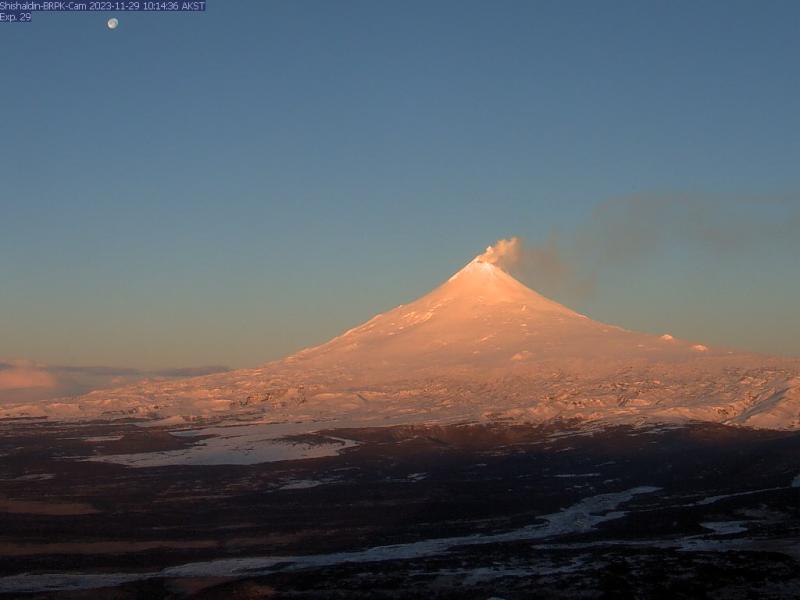Aleutians
(52.0765, -176.1109)The eruption of lava within the summit crater of Great Sitkin Volcano continues. Satellite radar data through May 11, 2024, showed continued advance of the lava flow toward the north and uplift of the lava flow surface above the vent. The active portion of the lava flow remains warm and was snow-free and steaming in occasional partly cloudy satellite and webcam views throughout the week. Seismic activity was low, with occasional small volcanic earthquakes. This level of seismicity is typical of the current eruption.
The current prolonged period of lava eruption at Great Sitkin Volcano began in July 2021. No explosive events have occurred since a single event in May 2021.
The volcano is monitored by local seismic, geodetic, and infrasound sensors and web cameras, as well as regional infrasound and lightning networks and satellite data.
Aleutians
(54.7554, -163.9711)Low-level unrest continues at Shishaldin Volcano, with occasional small volcanic earthquakes and weak seismic tremor observed throughout the week. A series of minor new ash deposits on the snow on the upper flanks of the volcano within approximately 1.2 miles (2 km) of the summit were observed in clear satellite and webcam imagery between May 10 and 16. Radar imagery shows minor collapses of the steep inner crater wall likely generated these deposits from associated fine-grained ash carried by the wind, as well as a small debris field extending approximately 2000 ft (600 m) down the elongate southwest drainage from the summit. Weak infrasound and seismic signals from very small explosions of gas bubbles bursting deep within the volcanic crater were also detected. A steam plume was observed in satellite and webcam views throughout the week, but no ash or sulfur dioxide gas plumes were observed. Minor rock falls associated with collapse events from the unstable ground in and near the summit crater, such as those observed this week, may generate very small clouds of fine-grained ash that dissipate quickly in the immediate vicinity of the summit.
No significant eruptive activity has occurred since November 2023.
Local seismic and infrasound sensors, web cameras, and a geodetic network are used to monitor Shishaldin Volcano. In addition to the local monitoring network, AVO uses nearby geophysical networks, regional infrasound and lighting data, and satellite images to monitor the volcano.




